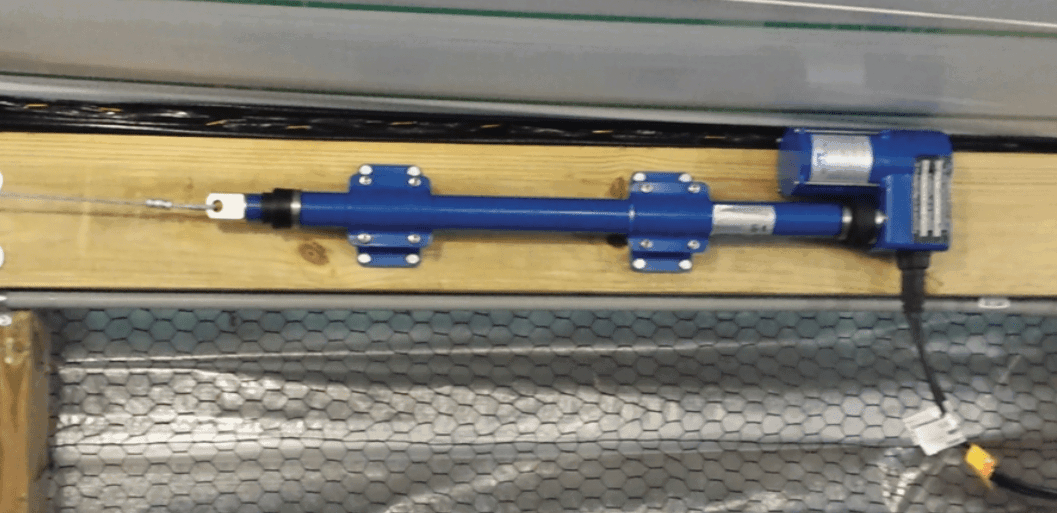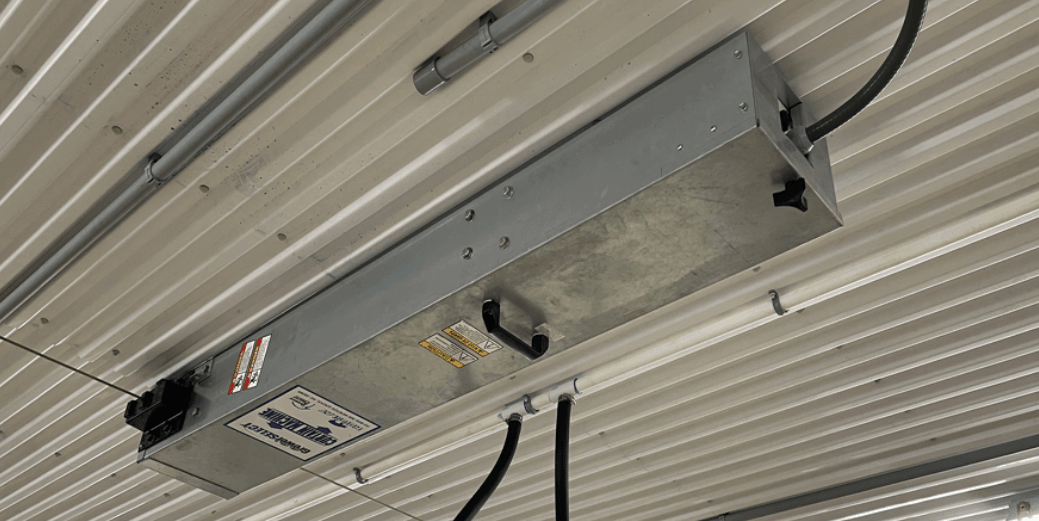



Make your labour more productive with actuated inlets
Automated ceiling inlets offer a time-saving alternative to gravity air inlets.While the fans are our ventilation system's visible, noisy engines, the air inlets play a larger role during cooler weather. Before reaching the animal level, incoming air should enter at a high velocity (700 fpm or more) with enough volume to mix thoroughly.
Almost any inlet style can perform well with good on-farm management. But with a producer spending an hour per day, on average, managing a finishing barn, a well-designed ventilation system should minimize the time spent adjusting air inlets.
Many existing facilities use gravity flow ceiling inlets (bifold, quad, or drop doors models) to introduce fresh air during the winter and transition periods. These inlets rely on counterbalance weights or springs to regulate the amount and speed of the incoming air based on static pressure. This style of inlet has several limitations.
1) It can be challenging to calibrate the inlets in the room the same because of the variance in baffles, counterweights, and installation.
2) As the system goes into tunnel mode, the inlets remain open, allowing the fans to pull hot air from the attic.
3) During minimum vent, the baffle openings become very small, creating thin streams of airflow that lack the volume to push along the ceiling far enough to warm before tumbling to animal level.
4) The baffles and vanes are also prone to "sticking" as dust accumulates.
These limitations are overcome by locking and unlocking baffles, cleaning, and making any other corrective measures needed. But let's face it; it is easy to walk past a stuck inlet when you are in a hurry or put off driving back to a site when the weather changes suddenly.

Use a linear actuator to regulate a single row of inlets.
Automated ceiling inlets offer a time-saving alternative to gravity inlets using a linear actuator or curtain machine. These machines work with the house controller to adjust the baffles to match the changing requirements of the fans.
We can set very accurate baffle openings matching the minimum ventilation rates, ensuring a large enough air stream to mix correctly. It is possible to latch shut one side of the inlets to change the air patterns inside the barn. Some advanced layouts have separate actuators to control individual rows of inlets allowing them to open in stages.
Because the actuator or return spring power the open and close actions of the baffles, the inlet baffles are less likely to "stick" because of dust.

Ceiling mounted curtain machine controls multiple rows of inlets
The house controller closes the ceiling inlets when the system switches into tunnel mode as the sidewall curtain drops. In reverse, the tunnel curtains close, and the ceiling inlets open as the weather cools.
Switching over to actuated inlets does not mean you will be able to reduce your workforce. But with an actuator on the job 24/7, it may mean your present staff can spend more time on other critical tasks. An actuated system also permits skilled farm staff members to perform the initial setup, allowing less experienced personnel to manage the daily farm tasks. Click to learn more about actuated inlet systems.






